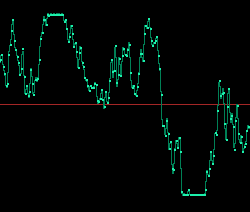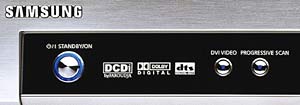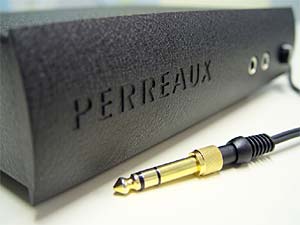Home Entertainment Blog Archive
Brought to you by your friendly, opinionated, Home Entertainment and Technology writer, Stephen DawsonHere I report, discuss, whinge or argue on matters related to high fidelity, home entertainment equipment and the discs and signals that feed them. Since this Blog is hand-coded (I like TextPad), there are no comments facilities. But feel free to email me at scdawson [at] hifi-writer.com. I will try to respond, either personally or by posting here emails I consider of interest. I shall assume that emails sent to me here can be freely posted by me unless you state otherwise.
This archive is for an uncertain period commencing Thursday, 20 November 2003
This is a piece I did for Appliance Retailer earlier on the year. It ought to be useful for people who are totally lost when it comes to making the necessary adjustments to their home theatre receivers. Go here.
Got a call from Sydney radio station 2UE this morning. They want to do a short piece on Saturday afternoon on how to set up your new Christmas DVD player etc. So they'll be interviewing me Saturday morning and broadcasting it sometime that afternoon. Should be short.
 A couple of years ago Sydney-based Lake Technology developed audio processing algorithms and hardware to make headphones sound like they're producing surround sound. The success of this enterprise is attested to by the fact it was was duly licensed by
Dolby Laboratories as Dolby Headphone.
A couple of years ago Sydney-based Lake Technology developed audio processing algorithms and hardware to make headphones sound like they're producing surround sound. The success of this enterprise is attested to by the fact it was was duly licensed by
Dolby Laboratories as Dolby Headphone.
Now another Sydney-based company, DEQX, has come up with a SHARC DSP-based digital processor (the PDC-2.6) to pre-process stereo audio signals to counteract deficiences in loudspeakers. This does four different things:
- equalises the speakers for frequency response and phase uniformity across the audio band
- eliminates phase discrepancies between the drivers in a two way or three way loudspeaker
- provides extremely steep crossovers between the drivers, free of phase shift
- equalises the in-room bass response of loudspeakers
The DSPs that do all the heavy EQ and phase manipulation and crossing over work with 32 bits of resolution. You can either have the unit set up for you by installers, or get the calibration kit which includes Windows 2000/XP software and a calibration microphone.
The reviews quoted on the company's Web site are extremely positive, and the whole concept is very appealing to me. Those speaker makers committed to the highest quality have to go to herioc lengths to reconcile the often contradictory demands in crossover design: smooth frequency response, minimal phase distortion, steep filter slopes, even impedance across the audio spectrum. One or more of these goals always suffers.
Where did the expertise for all this come from? Today I had a chat on the phone to DEQX CEO Kim Ryrie. Turns out that he was also the man behind the famed Fairlight Computer Musical Instrument back in the mid-70s.
It's also worth noting that the DEQX system (previously known as ClarityEQ) has been installed in such recording studios as Abbey Road.
Basic prices start at somewhere in the $AUS4,000 to $5,000 region. Precalibration for rooms on supplied detailed specification, using acoustic modelling, comes to around $US900. But you can make do with the internal parametric equaliser to make the necessary adjustments if you like.
Get the rockiest CD you can think of where the music thereon was recorded in, say, the 1970s, and play it. Then get just about any modern pop recording. Which is louder? The latter.
 This is not for no reason. Apparently most music purchasers want their CDs to be loud. If they are listening to a set of CDs on a CD jukebox, when one that comes up that seems less loud than its predecessor, they are disappointed. Perceived loudness is a function of average playback level, not peak level.
This is not for no reason. Apparently most music purchasers want their CDs to be loud. If they are listening to a set of CDs on a CD jukebox, when one that comes up that seems less loud than its predecessor, they are disappointed. Perceived loudness is a function of average playback level, not peak level.
PCM-based digital recording systems, such as the compact disc, have a hard upper limit to the recording level. You cannot go beyond 0dB. That's all there is to it. So record producers use limiters and dynamic range compressors to bump up the average level without pushing the peaks into 'red' territory. Sure, it damages the fidelity of the music, but that's the price you pay for popularity.
That's the theory, anyway. But all too often they use hard limiters, which effectively clip the music just as though an amplifier were being overdriven. The picture here is a small part of the wave from of the song 'Angels Brought Me Here' from the debut single CD of the winner of Australian Idol, Guy Sebastian. Look at those waveforms! Chopped right off, top and bottom.
The CD mastering was performed by someone called Oscar Gaona at Studios 301, Sydney.
Pleasing everyone, including those who like their music pure, would be possible. Just can the compression and limiting. All the listener has to do if he or she wants it louder is advance the volume control. Is that too much to ask?
 I've seen them in people's homes. I've seen them in a multitude of shops. I've seen them, incredibly, at product launches by major home entertainment equipment manufacturers. And now, once again, I've seen one in Iraq, courtesy of CNN.
I've seen them in people's homes. I've seen them in a multitude of shops. I've seen them, incredibly, at product launches by major home entertainment equipment manufacturers. And now, once again, I've seen one in Iraq, courtesy of CNN.
What I keep seeing is fat faces.
First, I must accept that discussing the issue in this entry in this context is probably inappropriate given the gravity of what has been achieved by the Coalition Provision Authority in Iraq with the capture of Saddam Hussein. I had a tear in my eye with the joy of the moment as I was watching the press conference last night in which the announcement was made. But the fact that these pictures are, more likely than just about any other, to be seen internationally make them a fitting example of this widespread (and, in the great scheme of things, trivial) problem.
The problem is that once some people have a widescreen display (ie. with an aspect ratio of 16:9 instead of the standard 4:3), they seem to live in fear of ever having black bars down the sides of the picture. Instead, they leave the display in 16:9 mode, stretching material recorded in 4:3 mode sideways.
 In those welcome, and pleasingly demeaning, shots of Hussein shown on plasma displays in the press conference, this attitude was in clear evidence. It was obvious that the video footage of the butcher was shot using a 4:3 aspect video camera. But the widescreen plasma displays were left set to widescreen mode, so Hussein's whole image was distorted sideways, stretched by 33% horizontally.
In those welcome, and pleasingly demeaning, shots of Hussein shown on plasma displays in the press conference, this attitude was in clear evidence. It was obvious that the video footage of the butcher was shot using a 4:3 aspect video camera. But the widescreen plasma displays were left set to widescreen mode, so Hussein's whole image was distorted sideways, stretched by 33% horizontally.
The first picture here shows my scan of the picture from the front page of today's The Canberra Times, and no doubt similar shots appear on front pages around the world. This is a straight screen capture from the video feed, seemingly not changed in any way other than being cropped at the edges.
The second picture here shows the same scan, but reduced in horizontal scale by 25% to adjust for the 4:3 to 16:9 widening to which the original picture was subject.
Now, I ask you, which one looks more like Hussein?
What is interesting is that the distorted image is still recognisably Hussein. The image processing and facial recognition circuitry in the human brain is truly an amazing thing.
 Here are my thoughts on the improvements provided by a DVI interface from DVD, compared to component video from the same DVD player. I've lifted these from my forthcoming review of the Marantz DV8400 DVD player which will appear in the Australian Best Buys, due out any day now. Please buy it anyway since I contributed 24 other reviews to this one, and this is only an excerpt of the Marantz review.
Here are my thoughts on the improvements provided by a DVI interface from DVD, compared to component video from the same DVD player. I've lifted these from my forthcoming review of the Marantz DV8400 DVD player which will appear in the Australian Best Buys, due out any day now. Please buy it anyway since I contributed 24 other reviews to this one, and this is only an excerpt of the Marantz review.
On static images, particularly test patterns, the difference [between DVI and component video] was extraordinary. There was a marked increase in picture stability from the DVI output compared to the component video, with reduced noise in dark grey areas. When a colour bar test pattern came up, DVI was ever so much sharper than component video. This difference was really obvious. There was also a tendency for a slightly green cast over some shades of grey with component video that was largely eliminated with DVI.This weekend it will be against the performance described in this last paragraph against which I will be checking the Samsung DVD player, mentioned below, with its Faroudja DCDi electronics.So how does it work on regular movies? During normal action we were not expecting a huge amount of difference. And, indeed, for the most part, the difference was indeed not huge. But it was significant. The main difference was a slightly sharper focus on the projected material. This was more obvious when switching from DVI back to component video as the image noticably softened.
But on some problematic scenes there was an obvious improvement. For example, in Chapter 14 of [the PAL Region 2/4 version of] Gigi, the uppity servant shaving Maurice Chevalier has closely spaced, fine horizontal stripes on his waistcoat. This normally produces a nasty moire pattern, as indeed it did from this player's component video outputs. But with DVI this also was eliminated.
The quality of the internal de-interlacer in the Marantz DVD player wasn't quite up to the quality of the Faroudja DCDi electronics in the ScreenPlay [5700 projector with which the testing was conducted], so the conversion to progressive scan occasionally caused minor image degradation. For example, in Title 19 of Video Essentials, the NTSC encoding switches frequently between film and video sourced material and at points has (intentionally) incorrect flags. This resulted in jagged edges on some fast-moving diagonals which weren't there on an analogue interlaced image sent to the projector. Likewise for the terrible Roadshow Mad Max [see here for more on this] in which all the interlaced fields constituting the frames have been inadvertently placed out of sync. Most of the time the progressive scan converter for the DVI output corrects this invisibly, but some odd colours catch it out, such as the pink sign above the roadhouse near the start of the movie.
 A Samsung DVD-HD938 DVD player turned up today (with confusing model numbers, it seems to be variously known as DVD-HD938, DVD-HD937 and DVD-HD935). This is significant in two ways. Apparently the price is going to be quite low (I believe that it'll be under $AUS1,000, but will advise when the official price comes through) and it features a DVI output. The actual socket is a DVI-I but apparently the thing is wired to support just DVI-D (see
here for what these mean). Which is fine. No, which is flippin' amazing! I've been using the $AUS3,000 Marantz DV8400 recently for DVI. The Denon DVD-A11 costs $AUS4,000.
A Samsung DVD-HD938 DVD player turned up today (with confusing model numbers, it seems to be variously known as DVD-HD938, DVD-HD937 and DVD-HD935). This is significant in two ways. Apparently the price is going to be quite low (I believe that it'll be under $AUS1,000, but will advise when the official price comes through) and it features a DVI output. The actual socket is a DVI-I but apparently the thing is wired to support just DVI-D (see
here for what these mean). Which is fine. No, which is flippin' amazing! I've been using the $AUS3,000 Marantz DV8400 recently for DVI. The Denon DVD-A11 costs $AUS4,000.
Okay, I haven't wired this one up yet, but already I'm excited. Shortly I'll be placing here some remarks on the actual effect of a DVI connection compared with component video, but one important point about it is that performance depends very much on the quality of the deinterlacing electronics in the DVD player.
And here's the reason for the excitement: notice the left-most logo on the photo herewith? Yep, Faroudja DCDi. Samsung hasn't skimped here.
Less exciting is the scaler built in. This can output native 480p or 576p as appropriate. Or it can be set to scale these to 720p or 1080i. But why would you want to do this? Okay, 720p would be okay if you have a DLP projector based on the Mustang HD2 DMD chip (native resolution 1,280 by 720 pixels). But nearly every other display will have to scale the incoming signal to match its own physical resolution. In other words, there will be two sets of scalings, one in the DVD player and one in the projector or display. This can only degrade the image.
Of course I'll check this out to see if my theorising is correct. On reflection, though, the 720p mode could useful because Samsung also sent down one of its new LCD RPTVs, the SP-46L5H (a 46 inch widescreen model). This uses 1,280 by 720 pixel panels and features a DVI input. Consequently it ought to match the 720p output mode rather well. Interestingly, this appears to use Samsung's own scaling and de-interlacing circuitry rather than Faroudja's, so I ought to be able to compare the quality of the two.
UPDATE (Friday, 5 December 2003, 4:59 pm): Samsung's PR firm tells me that this DVD player will be available in Australia in February 2004, and the recommended retail price will be a very attractive $AUS599.
UPDATE 2 (Friday, 5 December 2003, 5:01 pm): Vincent from Perth writes to suggest that I might have been a bit harsh on the whole scaling, then re-scaling thing. Could be. He points out that his Epson projector uses 1,280 by 720 LCD panels and so could take excellent advantage of the 720p mode. He further points out that many projectors have a 'through' mode which could also be suitable. And he's quite right. I'd kind of forgotten about the through mode because with analogue connections, most 'through' modes on projectors assume a 4:3 aspect ratio, whereas I usually want 16:9. (An exception has been the various Sony home theatre projectors which have through-wide and through-normal modes).
The 'through' mode, by the way, eliminates the vertical scaler. Each input line is simply translated into an output line from the projector. The horizontal scaler is still used, normally, because an analogue signal can be any width. However if fed a 1,280 by 720 digital signal (which is what 720p is) than there should be no horizontal scaling either.
Bloggers have great fun fisking articles from the regular media. Since my stuff is published in the regular media, I ought to be cautious, but this piece from The New York Times has a few mistakes in it.
And those wanting to see DVD movies in their full glory need a television capable of displaying, at a minimum, what are known as 480p images.Wrong. Entirely wrong. To see a DVD movie (as opposed to a video-sourced TV show) in its full glory, all you need is a TV capable of displaying 480 lines (for NTSC). Whether they are shown progressively or interlaced makes no difference to resolution. However a progressive scan TV can reduce the combing that is inherent in the NTSC (but not PAL) TV system. This comes at a cost, though: a subtle jerkiness can appear in pans because half the film frames are shown twice, and the other half are shown three times, in the pattern 2:3:2:3:2:3 etc. This is inherent in translating 24 frames per second to a 60 hertz system. Some computer based systems (and, potentially in the future, DVD players) can do their progressive scan at 48 or 72 hertz which will truly eliminate this.
DVD movies have the same 480 lines of resolution as television, but on a DVD all 480 lines are refreshed in every frame. This is known as progressive (as opposed to interlaced) scanning -- hence 480p.This appears to be implying that the picture is stored in progressive format on DVDs. But generally it isn't. While I don't agree with everything on the DVD FAQ I do agree with this:
Progressive-source video (such as from film) is usually encoded on DVD as interlaced field pairs that can be reinterleaved by a progressive player to recreate the original progressive videoThe confusion arises because filmed material (as opposed to video material) is indeed progressive scan, since each frame captures a single instant in time. Nevertheless it is stored on the DVD interlaced, and the fields have to be woven together again on way or the other. This can be in electronics by a progressive scan DVD player or the processing circuitry on a digital projector. But even an old-fashioned interlaced CRT TV still performs the weaving. It's just that it's done in the time domain by the rapid alternation of odd and even fields.
The first wave of rear-projection units used cathode-ray tubes. While in a direct-view television, electrons are beamed directly onto a glass tube, a rear-projection set is more like a self-contained movie theater, where images are beamed as visible light onto a screen (in this case translucent). The imprecision of that process explains why analog rear-projection units do not look so great.The problems with CRT rear projection TVs have nothing to do with 'imprecision' of any process, at least in recent years. They have to do with the fairly low light output of the tubes contained therein. CRT front projectors also have low output, but no one expects to use one of these anywhere but in a darkened room. RPTVs, though, are expected to be used in normal TV viewing environments just like a regular TV. So various strategies have been employed to improve their brightness. One of these could be thought of as 'excessive precision'. Most CRT RPTVs focus their light beams a bit too well and consequently leave a visible horizontal line structure which I, for one, detest. You can get rid of this by sitting further back, but then the effective size of the screen (in terms of the angle of your vision that it occupies) is reduced to not much bigger than a regular CRT TV. The reason for this is because the perceived level of brightness is not an average across an area, but judged from the peaks. Spreading the picture lines a little to eliminate the between-line gaps would, even though the average remains the same, make the picture seem duller.
The other problem with RPTVs is that in order to optimise brightness, the translucent screen is very directional, making the bulk of the light appear within a fairly narrow vertical angle. Stand up while you're watching an RPTV and the picture gets dull.
I keep on finding the claim that progressive scan video necessarily gives a high resolution than interlaced video. For example, take this from AudioVideo101.com:
HDTV signals broadcast at 60 Hz, the standard for broadcast television, vary in what scanning format is used. The highest resolution format (1,920 x 1,080) is presented using interlaced scanning while the 1,280 by 720 format uses progressive scanning. Thus, the 1,280 by 720 format presents a complete 921,600 pixels 60 times per second. However, the 1,920 by 1,080 format presents only half of its total resolution every 1/60th of a second (1,036,800 pixels 60 times per second or 2,073,600 pixels 30 times per second). In essence, then, at a 60 Hz refresh rate, the true resolution of the two HDTV formats (what is presented every 1/60th of a second) is very similar.This is true only in the case of material sourced from a progressive scan video recorder. It is not true with film-sourced movies. These are filmed at 24 frames per second. Progressive scan transmission at 50 hertz involves repeating every single telecined line twice. It's a bit more complicated in 60 hertz countries since each line is shown 2.5 times. The 'resolution' in the sense of the amount of data carried by a progressive scan system is higher than the interlaced version, for sure. But the 'resolution' as used in common parlance -- the amount of picture detail you see on screen -- is, in the case of film sourced material (ie. virtually all movies), identical in the progressive scan and interlaced versions. It's just that the progressive scan version carries a huge amount of redundancy.
I have just placed on this site an article I did for the March 2002 edition of Appliance Retailer on DVD Audio and SACD.
Some thoughts since then:
- A new option for playing SACD and DVD Audio is using the increasing number of Universal Disc Players which support both. I'm happy to see that my prediction ('Expect within a year to see players that support DVD-A, SACD, CD, DVD Video and, probably, MP3 playback from CD-Rs ... all in the one box') came true.
- Some DVD-A players can apparently provide a digital DVD-A signal to some receivers via a FireWire derivative. I imagine we'll see increasing standardisation of this over the next year or so.
- In the 'Tips' section I suggested the 'just press Play' shortcut for DVD Audio. Namely, rather than closing the player drawer you press Play with the drawer open and the DVD Audio content will immediately start playing (usually the surround mix), bypassing the menus. Unfortunately, though, this does not work with some players: specifically the higher level Denon units and the Harman Kardon DVD 30.
- I also mention there that you ought to adjust the speaker settings in the DVD Audio/SACD player's menus. But this glosses over the fact that SACD players do not perform speaker time alignment, and many DVD Audio players do not do time alignment, or bass management, or both for DVD Audio discs.
New Zealand audiophile electronics maker Perreaux publishes an occasional electronic newsletter to around 3,000 people around the world. I couldn't find an archive of the newsletter at Perreaux's Web site, but it's easy to sign up on the home page. It doesn't just boast about its own products, but includes some useful tips for the listener and recommends a few CDs best enjoyed through high quality gear.
 Anyway, my review of Perreaux's SXH1 headphone amplifier was recently published in Australian HI-FI, occasioning these remarks in the latest newsletter:
Anyway, my review of Perreaux's SXH1 headphone amplifier was recently published in Australian HI-FI, occasioning these remarks in the latest newsletter:
The latest edition of Australian Hi Fi magazine (Oct/Nov 2003) is out now and contains a well written article on the new Silhouette series SXH1 headphone amplifier. Reviewer, Stephen Dawsons', strong emphasis on a measurement based review process is refreshing. Please open the attached link [197kB PDF -- SCD] to read his well structured review. To find out more about the SXH1 product please click on the attached link. Do you like factual reviews? Writer Stephen Dawson is one of Australia's leading freelance writers on home entertainment equipment: high fidelity, home theatre, the equipment required, and the software that it uses. I highly recommend his informative, no nonsense website.Blush. As I emailed back:
I'm glad you liked the review, but the way I see it is that the review was good because the SHX1 is good.Still, it's nice to hear that someone liked my review. Especially the producer of the product under review. I'd say that this is what makes it all worth while, except that it's actually the money the magazines and newspapers pay me that makes it all worth while. :-)